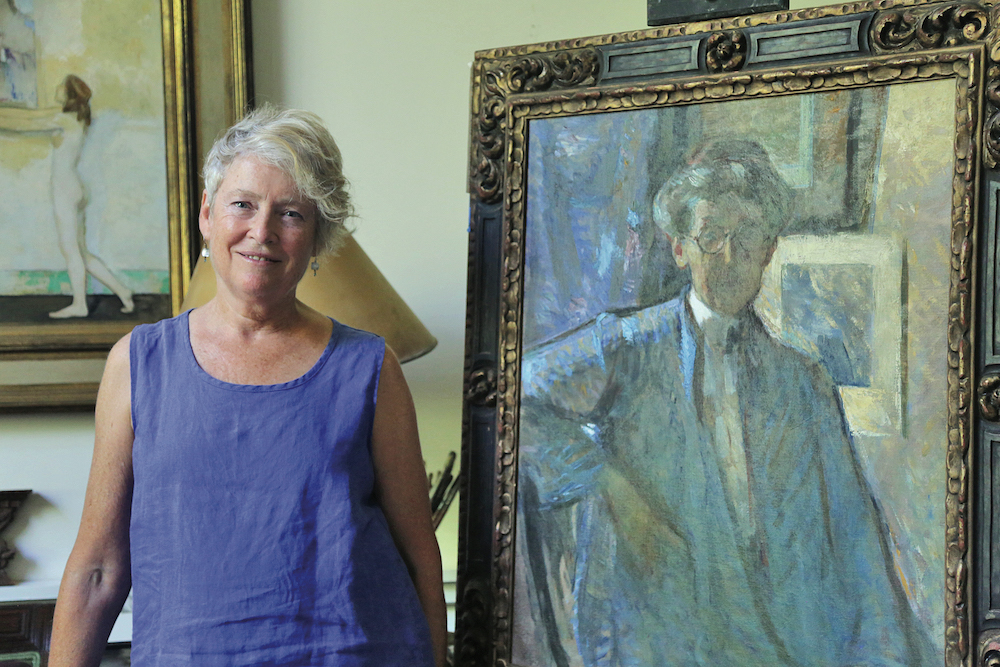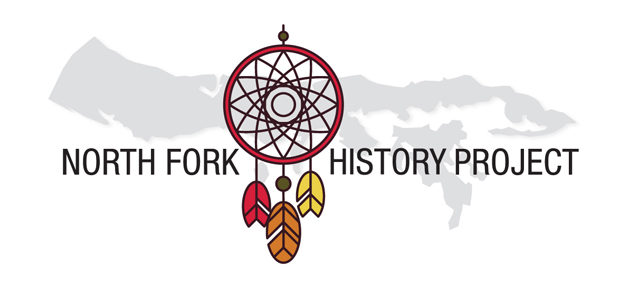North Fork History Project: Artists painted here for solitude In the years after the Civil War

Wendy Prellwitz paints in the same Peconic studio where her great-grandfather Henry Prellwitz painted early in the 20th century. The adjoining studio is where her great-grandmother Edith Prellwitz painted.
Next to the studios is the house Henry and Edith had moved to the wooded site, which overlooks Peconic Bay at the end of Indian Neck Lane, in 1914. Entering the house is stepping back in time. In one corner is a self-portrait painted by Edith; on a table nearby is a can that holds some of her paintbrushes.
The feeling a visitor gets walking into the house is that Edith and Henry have just stepped out for a swim, or a walk along a sandy lane to the nearby home of a painter friend, Irving Wiles, where they will sit and chat about their work and how summer goes by too quickly and how lucky they are to live in a place this grand.
“So much of what is here was theirs,” said Wendy Prellwitz, who is also a painter, and an architect as well, as she tours the home and studios with a visitor on a sunny afternoon. “I’ve kept it like that, even though I live here and I paint here, too. But it’s very much still the place they knew, and the place I knew growing up.”
In the years after the Civil War ended in 1865, a group of artists from New York City began to venture east to the North and South forks of Long Island, seeking remarkable landscapes, solitude, open air in which to paint and a very different lifestyle. Artist William Merritt Chase started an art school in the Shinnecock Hills in 1891, and his followers — and those artists who modeled themselves after French plein air painters like Monet and Renoir — began to realize what a remarkable place eastern Long Island was.
By the end of the 19th century and into the early 20th, a group of New York City artists began to settle into old farmhouses on Indian Neck in Peconic, drawn to the area by its great beauty, farm fields and woods, Richmond Creek and the soft, “wet” light — sunlight that bounces off salt water — made possible by Peconic Bay on the south and Long Island Sound on the north.
Walking around Ms. Prellwitz’s Peconic property, the bay in front of the house aglow in the warm afternoon sunlight, the home seems frozen in a particular time and place. Henry and Edith painted right here; they sat on thatbench overlooking the bay; they walked on thatbeach.
Ms. Prellwitz can, with a casual wave of her hand, point out what drew her great-grandparents to Peconic and what makes it so special all these years later. She can look at their paintings — Edith’s “East Wind” or her “Sailboats, Peconic Bay, Long Island” or Henry’s “Moonlight Bay” — and almost point out where they stood when they painted.
“This is the place they loved,” she said. “And look around — it’s still extraordinary.”
As the North Fork became home to a school of artists some would later call the “Peconic Impressionists,” the area also developed a gifted group of locally born painters whose art celebrated the area’s natural beauty.
Cutchogue was the home of Julia Wickham, born in 1866 in the Wickham farmhouse, whose art up through her death in 1952 showcased the salt creeks, woods and farm fields she grew up with. Mattituck was home to the studio of Caroline M. Bell, who was born in 1874 and died in 1970. She and Ms. Wickham often painted together, and they traveled widely, including to Europe.
Greenport had a number of prominent artists working in studios along Stirling Harbor. Albert Latham, born on an Orient farm in 1906, painted what he saw around him — Village Lane on a snowy morning, the scallop fleet in Hallocks Bay.
“So you had the New York City artists like the Prellwitzes, who first came out in summer before settling here full-time, and you had these very talented artists who were born in the hamlets and who developed on their own,” said Geoffrey Fleming, former director of the Southold Historical Society and co-author of “A Shared Aesthetic: Artists of Long Island’s North Fork.”

“It was all happening during the same span of years,” he added.
Many of the artists socialized together, with the New York City expats a particularly tight group. They showed their work at the first major North Fork exhibition, which was a 1913 benefit for Eastern Long Island Hospital. The exhibition was held at the Masonic Temple on Main Street in Greenport. Mr. Wiles was in that show, as was Ms. Wickham.
“This was the first big show on their own turf,” said Mr. Fleming. “It was a wake-up call to the local artists that you could show your work right here.”
And, Mr. Fleming said, people took paintings of the area back to New York City, which drew more people to the North Fork. “The light here was so perfect — you hear that a lot about the painters,” he said. “To many of the artists, this became their home. It was a place they didn’t want to leave and it drew them back when they did leave. … They could paint so beautifully here.”
An attitude developed along the lines of: Why are you going to Europe to paint? You can find whatever you are looking for on the North Fork.
The concept of plein air painting — painting outdoors in natural light — began in France. “Many French painters were going outside to work and paint,” said Alicia Longwell, a chief curator at the Parrish Art Museum in Southampton. “The artists out here were following in those footsteps. Monet was the poster boy for this kind of Impressionism.
“This caught on with the Americans,” she added. “They were looking for outdoor scenes when they came out here.”
The Parrish has a painting by each of the Prellwitzes and recently hung one by Wiles called “Scallop Boats, Peconic Bay.”
East Hampton gallery owner Terry Wallace bought his first Caroline Bell paintings in the early 1980s in a barn in Mattituck that she had once owned. Mr. Wallace is an expert on the Peconic Bay Impressionists. He remains deeply fascinated by their work.
“The New York City artists whose world was centered on Indian Neck had celebrity-like status,” he said. “They were different from the local artists. Julia and Caroline would sometimes paint together in the Bell studio, which had a great view of Mattituck Inlet.
“I think what brought them here and kept them here was the solitude,” he added. “People always say, ‘It’s the light, it’s the light.’ But, really, it was so many things.”









